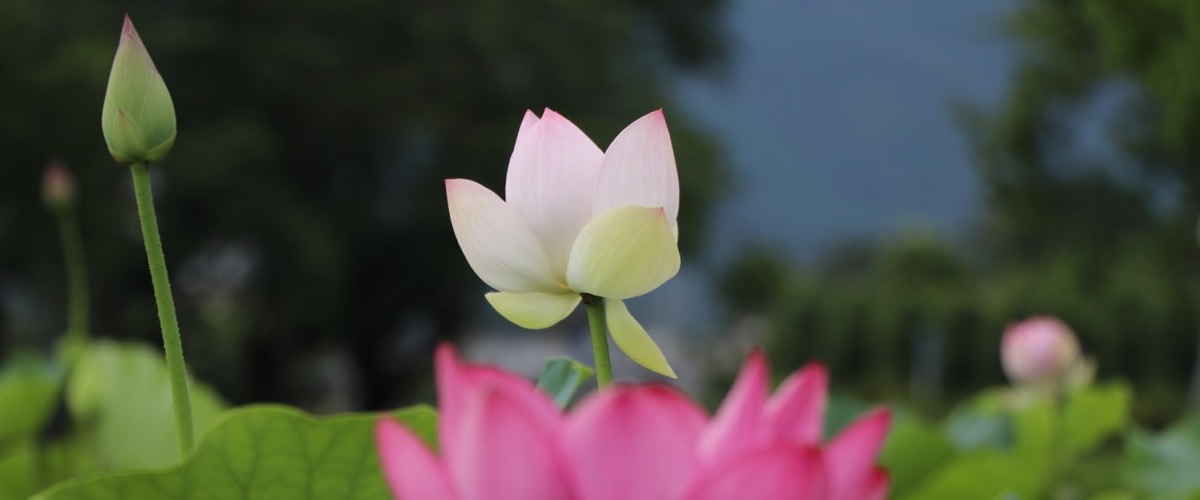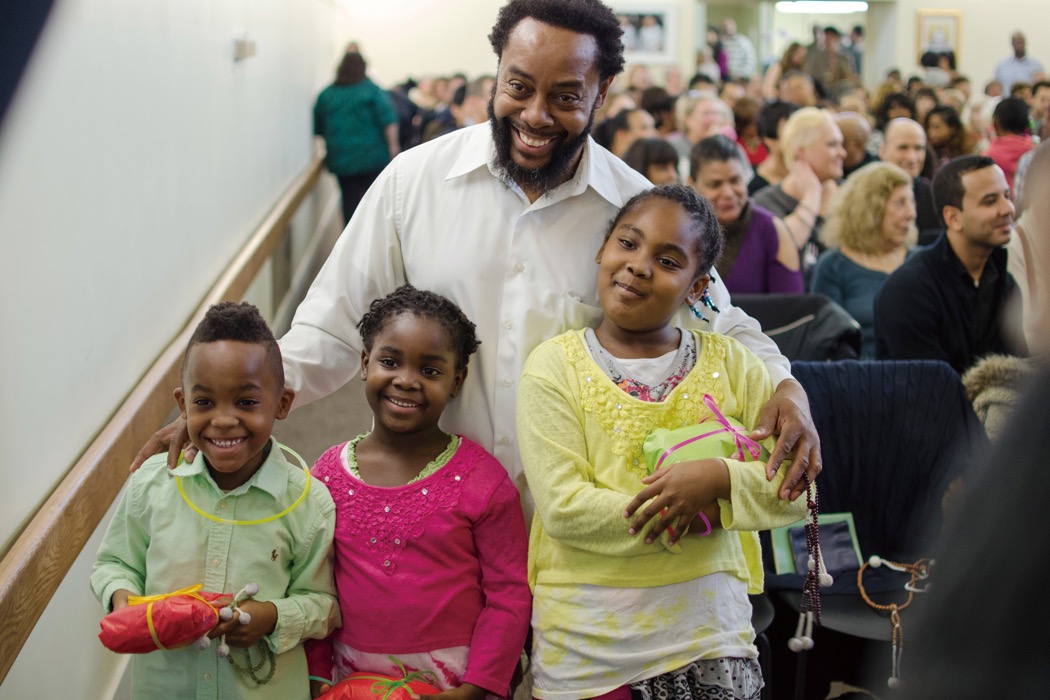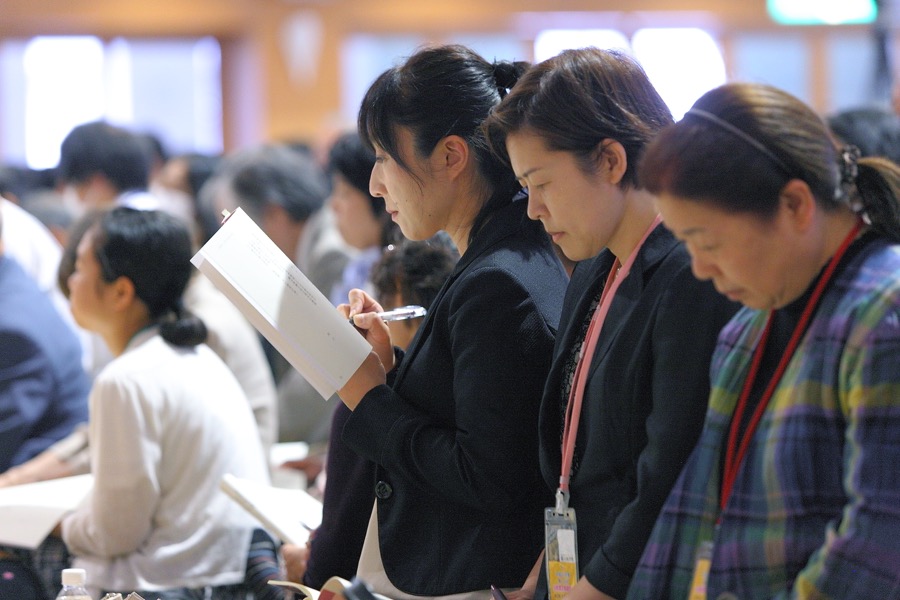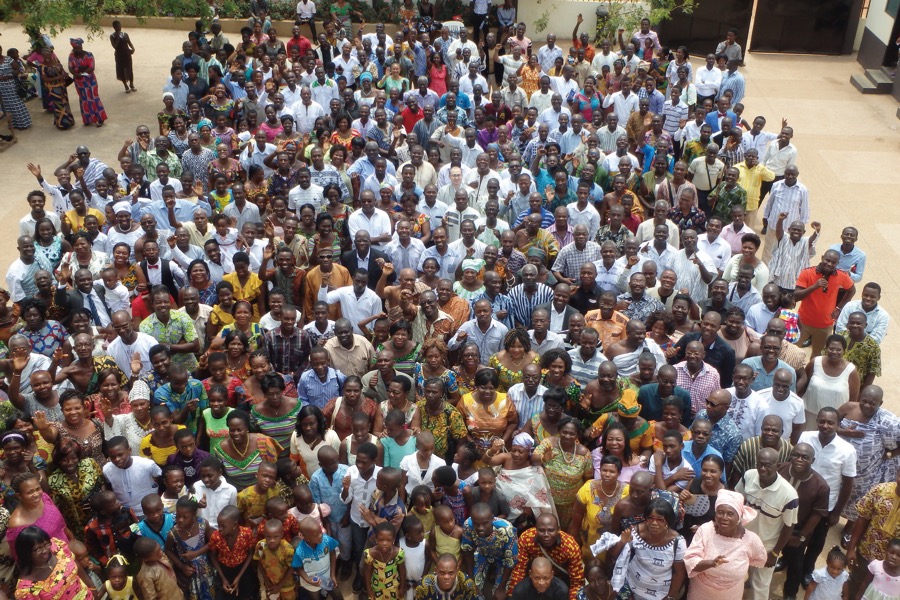
Practice of true Buddhism
The Road to True Happiness
It is not easy for people to find solutions when they search for ways to solve and overcome suffering, sadness and difficulties. Buddhism reveals the fundamental solution to the major sufferings that everyone encounters in life, such as birth, aging, sickness and death. Buddhism teaches that no one can obtain true happiness without resolving these sufferings.
We are able to achieve true happiness when we develop a powerful and stable state of life, gain profound wisdom, and maintain a strong mind and spirit through upholding true faith and practice, based on the teaching of cause and effect.
True happiness is the achievement of tranquility in our life that is unshakable.
The Practice of Faith in Nichiren Shoshu
Nichiren Daishonin expounded three significant points in carrying out the teaching of true Buddhism:
faith, practice, and study.
1. Faith signifies absolute faith in the Gohonzon.
2. Practice is the actual practice to uphold one’s faith.
3. Study means to correctly study the Buddhism of Nichiren Daishonin.
There are two aspects to the practice of Nichiren Shoshu Buddhism, which are practice for oneself, such as chanting Nam-Myoho-Renge-Kyo, and practice for the sake of others, which is to tell others of the great power of this Buddhism.
Through carrying out the actual practice, based on faith, practice, and study with the true Gohonzon, not only will the personal happiness of the believer be manifested, but also the purification of the society can be achieved.
Currently, there are lay believers practicing Nichiren Daishonin’s Buddhism in Japan and 50 other countries around the world. Nichiren Daishonin teaches that we will be able to realize the true world peace when many people around the world take faith in and practice Myoho-Renge-Kyo.
In each country, the lay believers of Nichiren Shoshu have learned the correct view of life, based on this faith and practice. They are enjoying their daily lives filled with hope and happiness.
Significance of the Temples
There are over 700 temples, including the Head Temple Taisekiji and the local temples in Japan and overseas that belong to Nichiren Shoshu. All the temples carry the significance of properly protecting, transmitting, and propagating Nichiren Daishonin’s Buddhism in each region.
The temples possess the three treasures of the Buddha, the Law and the priesthood and provide the place to practice for both priests and lay believers. They have the important role of teaching leading the believers on the true path to attain Buddhahood. Various Buddhist ceremonies and activities are available to those who visit the temple, such as conducting memorial ceremonies for the members’ ancestors.
It is important for those who practice Nichiren Daishonin’s Buddhism to attend the Nichiren Shoshu temples regularly, in order to listen to the true teaching and strengthen their faith.
Hokkeko
The organization of Nichiren Shoshu lay believers who correctly practice Nichiren Daishonin’s Buddhism is called “Hokkeko.”
Nichiren Daishonin himself gave the name “Hokkeko” to the lay believers.
As members of the Hokkeko, the believers make efforts, day and night, to accumulate good fortune and positively influence society. They visit their local temples, where they deepen their faith through listening to the priest’s sermon, sharing encouraging experiences with their fellow members, and carrying out various activities in faith and practice.
Ceremonies and Events in the temple
[ Yearly Events ]
<-- scroll -->
Date |
Name of Ceremony |
| Jan. 1 | The Gantan Gongyo |
| Feb. 3 | The Setsubun Ceremony |
| Feb. 7 | The Koshi-e Ceremony |
| Feb. 16 | The Otanjo-e Ceremony |
| Vernal Equinox Day | The Higan-e Ceremony (Spring) |
| Apr. 6-7 | The Goreiho Mushibarai Ceremony (in Head Temple) |
| Apr. 28 | The Risshu-e Ceremony |
| May. 1 | The Daigyo-e Ceremony |
| Jul. or Aug. 15 | The Urabon Ceremony |
| Aug. 19 | The Kanshi-e Ceremony |
| Sep. 12 | The Gonan-e Ceremony |
| Autumnal Equinox Day | The Higan-e Ceremony (Autumn) |
| Nov. 15 | The Mokushi-e Ceremony |
| Nov. 19-20 | The Gotaie Ceremony (in Head Temple) |
>> details of these ceremonies
[ Monthly Events ]
Okyobi Ceremony (monthly memorial service)
Kofu Shodai ceremony [First Sunday]
Oko ceremony [Second Sunday]























